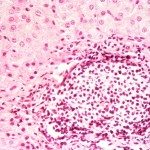Lien vers Pubmed [PMID] – 25630935
Ecohealth 2015 Jan;
In December 2011, the European Food Safety Authority awarded a Grant for the implementation of the FLURISK project. The main objective of FLURISK was the development of an epidemiological and virological evidence-based influenza risk assessment framework (IRAF) to assess influenza A virus strains circulating in the animal population according to their potential to cross the species barrier and cause infections in humans. With the purpose of gathering virological data to include in the IRAF, a literature review was conducted and key findings are presented here. Several adaptive traits have been identified in influenza viruses infecting domestic animals and a significance of these adaptations for the emergence of zoonotic influenza, such as shift in receptor preference and mutations in the replication proteins, has been hypothesized. Nonetheless, and despite several decades of research, a comprehensive understanding of the conditions that facilitate interspecies transmission is still lacking. This has been hampered by the intrinsic difficulties of the subject and the complexity of correlating environmental, viral and host factors. Finding the most suitable and feasible way of investigating these factors in laboratory settings represents another challenge. The majority of the studies identified through this review focus on only a subset of species, subtypes and genes, such as influenza in avian species and avian influenza viruses adapting to humans, especially in the context of highly pathogenic avian influenza H5N1. Further research applying a holistic approach and investigating the broader influenza genetic spectrum is urgently needed in the field of genetic adaptation of influenza A viruses.

